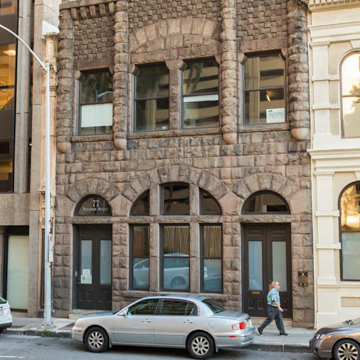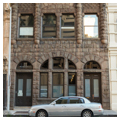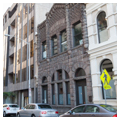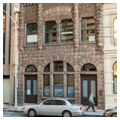A Romanesque Revival building rendered in local volcanic bluestone, the Bishop Estate Building offered an architectural image of stability during the tenuous period of the provisional government's rule. The building's second-story stonework, with its rounded piers, heavy dentil course, and high-relief upper level with its checkerboard pattern, is of exceptional quality. The cast-iron pilaster at the southeast end of the building is in need of attention. It is a remnant of the Campbell Building (1883), which shared a common wall with the Bishop Estate building until 1965 when it was demolished.
You are here
Bishop Estate Building
If SAH Archipedia has been useful to you, please consider supporting it.
SAH Archipedia tells the story of the United States through its buildings, landscapes, and cities. This freely available resource empowers the public with authoritative knowledge that deepens their understanding and appreciation of the built environment. But the Society of Architectural Historians, which created SAH Archipedia with University of Virginia Press, needs your support to maintain the high-caliber research, writing, photography, cartography, editing, design, and programming that make SAH Archipedia a trusted online resource available to all who value the history of place, heritage tourism, and learning.




















